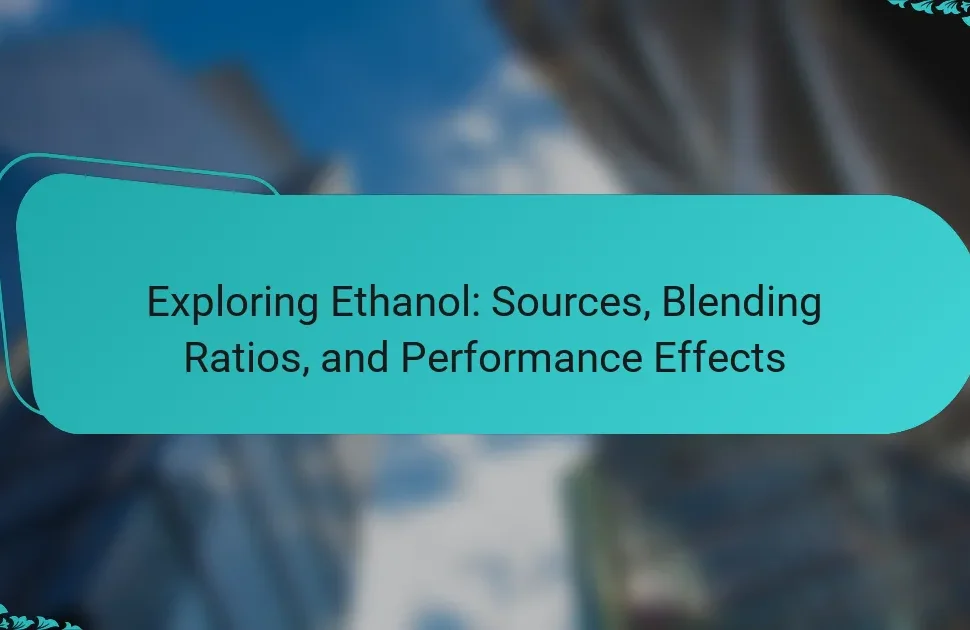
What is Kerosene?
Kerosene is a flammable hydrocarbon liquid derived from petroleum. It is commonly used as a fuel for jet engines and heating. Kerosene has a boiling point range of 150 to 300 degrees Celsius. It is also utilized in lamps and as a solvent. The chemical composition of kerosene primarily includes alkanes and cycloalkanes. Its specific gravity typically ranges from 0.78 to 0.81. Kerosene is known for its ability to produce a high energy output. It is an essential fuel source in many parts of the world.
How is Kerosene produced?
Kerosene is produced through the distillation of crude oil. This process involves heating crude oil to separate it into different components based on boiling points. Kerosene typically boils between 150°C and 300°C. The distillation process occurs in a fractionating column, which allows for the collection of various hydrocarbon fractions. After distillation, kerosene may undergo further refining to remove impurities. This refining enhances its quality and suitability for various applications. The production process is essential for ensuring that kerosene meets industry standards for use in heating and aviation fuels.
What are the raw materials used in Kerosene production?
The raw materials used in kerosene production are primarily crude oil and natural gas. Crude oil undergoes refining processes to separate kerosene from other hydrocarbons. The refining process includes distillation, where crude oil is heated and its components are separated based on boiling points. Kerosene typically comes from the middle distillate fraction of crude oil. Natural gas can also be processed to produce kerosene through gas-to-liquids technology. This method converts natural gas into liquid hydrocarbons, including kerosene. The use of these raw materials is crucial in meeting global energy demands.
What processes are involved in refining Kerosene?
The processes involved in refining kerosene include distillation, hydroprocessing, and blending. Distillation separates kerosene from crude oil based on boiling points. This process typically occurs in a fractionating column. Hydroprocessing involves treating kerosene with hydrogen to remove impurities and enhance quality. It improves stability and reduces sulfur content. Blending combines different hydrocarbon streams to achieve desired properties. Each process ensures that kerosene meets industry standards for performance and safety. These refining steps are essential for producing high-quality kerosene suitable for various applications.
What are the properties of Kerosene?
Kerosene is a clear, flammable liquid derived from crude oil. It has a boiling point range of approximately 150 to 300 degrees Celsius. Kerosene is less dense than water, with a density of about 0.78 to 0.81 g/cm³. It is composed primarily of hydrocarbons, specifically alkanes and cycloalkanes. Kerosene has a flash point between 38 and 72 degrees Celsius, indicating its flammability. The liquid is insoluble in water but can dissolve in organic solvents. Kerosene emits a characteristic odor due to its hydrocarbon content. Its viscosity is relatively low, allowing for easy flow and use in various applications.
What are the physical characteristics of Kerosene?
Kerosene is a clear to yellowish liquid with a characteristic odor. It has a boiling point range of approximately 150 to 300 degrees Celsius. Kerosene is less dense than water, with a density of about 0.81 to 0.85 g/cm³. It is insoluble in water but soluble in organic solvents. The flash point of kerosene is typically around 38 to 72 degrees Celsius, making it flammable. Its viscosity is around 1.5 to 2.5 centistokes at 40 degrees Celsius. Kerosene has a relatively low surface tension, which contributes to its ability to spread on surfaces. These physical characteristics make kerosene suitable for various applications, including fuel and solvent uses.
How does the chemical composition of Kerosene affect its properties?
The chemical composition of kerosene significantly influences its physical and chemical properties. Kerosene primarily consists of hydrocarbons, mainly alkanes, cycloalkanes, and aromatic compounds. This composition affects its boiling point, viscosity, and combustion characteristics.
Kerosene typically has a boiling point range of 150 to 300 degrees Celsius. This range allows for efficient fuel use in various applications. The viscosity of kerosene is relatively low, which facilitates easy pumping and atomization in engines.
The presence of aromatic compounds contributes to its energy density and combustion efficiency. Additionally, the specific ratio of hydrocarbons affects the smoke point and flash point, which are critical for safety. The flash point of kerosene is around 38 to 72 degrees Celsius, indicating its flammability.
These properties make kerosene suitable for use in jet fuel, heating, and lamps. The chemical composition thus directly correlates with its functionality and safety in practical applications.
What are the main uses of Kerosene?
Kerosene is primarily used as a fuel for jet engines and heating. It serves as a common energy source in aviation, providing efficient combustion. In households, kerosene is utilized for heating and cooking, especially in areas without natural gas access. Additionally, it is employed as a solvent in industrial applications. Kerosene is also used in the production of chemicals and as a lubricant in machinery. Its versatility makes it a crucial energy resource globally.
How is Kerosene used in aviation fuel?
Kerosene is used as a primary component in aviation fuel, specifically in jet fuel formulations. Jet A and Jet A-1 are the most common types of aviation fuel derived from kerosene. These fuels provide the necessary energy for jet engines to operate efficiently. Kerosene’s high energy density allows aircraft to travel long distances without refueling. Additionally, kerosene has a low freezing point, making it suitable for high-altitude flights. The fuel’s combustion properties ensure optimal performance in turbine engines. Kerosene’s use in aviation fuel is critical for commercial and military aviation operations.
What role does Kerosene play in heating and cooking?
Kerosene serves as a fuel for heating and cooking. It is commonly used in stoves and heaters, especially in areas without access to natural gas. Kerosene burns efficiently, producing a significant amount of heat. This makes it a reliable choice for cooking meals and warming spaces. According to the World Health Organization, kerosene is used in many developing countries for household energy needs. Its affordability and availability contribute to its widespread use in these regions.
In what other industries is Kerosene utilized?
Kerosene is utilized in several industries beyond its primary use as a fuel. In the aviation industry, kerosene is a key component in jet fuel. It provides the necessary energy for aircraft engines. The heating industry also relies on kerosene for space heating and water heating applications. Kerosene is used in the production of chemicals and as a solvent in various manufacturing processes. Additionally, it serves in agriculture as a pesticide and herbicide carrier. The energy sector employs kerosene in power generation in some regions. Its versatility makes kerosene a valuable resource across multiple sectors.

What safety guidelines should be followed when using Kerosene?
When using kerosene, follow these safety guidelines: Store kerosene in a cool, well-ventilated area away from direct sunlight. Use approved containers specifically designed for kerosene. Keep kerosene away from open flames, sparks, and heat sources. Always use kerosene in well-ventilated spaces to avoid inhaling fumes. Wear protective gear, such as gloves and goggles, when handling kerosene. Dispose of kerosene waste according to local regulations. In case of spills, clean immediately and safely. These practices minimize risks associated with flammability and toxicity.
What are the health risks associated with Kerosene exposure?
Kerosene exposure poses several health risks. Inhalation can lead to respiratory issues, including cough and shortness of breath. Skin contact may cause irritation or dermatitis. Ingestion of kerosene can result in gastrointestinal distress, including nausea and vomiting. Long-term exposure is linked to more severe conditions such as lung damage and potential carcinogenic effects. Studies indicate that chronic exposure can impair liver function and affect the central nervous system. The Agency for Toxic Substances and Disease Registry (ATSDR) highlights these risks in their health consultations on kerosene.
What symptoms indicate Kerosene exposure?
Symptoms indicating kerosene exposure include respiratory issues, skin irritation, and gastrointestinal distress. Individuals may experience coughing, difficulty breathing, or a burning sensation in the throat. Skin contact can lead to redness, itching, or chemical burns. Ingesting kerosene can cause nausea, vomiting, and abdominal pain. Neurological symptoms may also occur, such as dizziness or headaches. The severity of these symptoms can vary based on the level of exposure. Immediate medical attention is recommended for severe reactions or ingestion.
How can exposure be minimized in various settings?
Exposure to kerosene can be minimized in various settings by implementing safety measures. Proper ventilation is essential in enclosed spaces. Using appropriate personal protective equipment, such as gloves and masks, reduces direct contact. Regular maintenance of kerosene appliances prevents leaks and spills. Storing kerosene in designated, well-ventilated areas limits inhalation risks. Education on safe handling practices is critical for users. Following guidelines from safety organizations enhances awareness and compliance. These strategies collectively reduce the risk of exposure to kerosene.
What precautions should be taken when storing Kerosene?
Store kerosene in a cool, well-ventilated area away from direct sunlight. Use a tightly sealed container specifically designed for flammable liquids. Ensure the storage area is free from ignition sources such as open flames or sparks. Keep kerosene out of reach of children and pets. Label the container clearly to avoid confusion with other liquids. Regularly inspect the storage container for leaks or damage. Follow local regulations for hazardous materials to ensure compliance. These precautions help prevent accidents and ensure safe handling of kerosene.
What are the recommended storage conditions for Kerosene?
Kerosene should be stored in a cool, well-ventilated area away from direct sunlight. The ideal temperature for storage is between 20°F to 80°F (-6°C to 27°C). Containers must be tightly sealed to prevent evaporation and contamination. Use approved storage tanks or containers made of appropriate materials. Avoid storing kerosene near heat sources or open flames. Regularly check for leaks or deterioration of containers. These conditions help maintain kerosene’s quality and reduce safety hazards.
How can Kerosene storage safety be ensured?
Kerosene storage safety can be ensured by following specific guidelines. Store kerosene in approved containers that are clearly labeled. Keep the storage area well-ventilated to prevent the accumulation of fumes. Maintain a cool, dry environment away from direct sunlight and heat sources. Ensure that containers are tightly sealed to prevent leaks. Regularly inspect storage containers for any signs of damage or wear. Keep kerosene away from flammable materials to reduce fire risk. Train personnel on emergency procedures in case of spills or leaks. According to the National Fire Protection Association, proper storage practices significantly reduce the risk of accidents.

How can Kerosene be used safely and effectively?
Kerosene can be used safely and effectively by following specific safety guidelines. First, always store kerosene in approved containers. These containers should be labeled and kept away from heat sources. Use kerosene in well-ventilated areas to avoid inhalation of fumes. Ensure that there are no open flames or sparks nearby when using kerosene. When lighting a kerosene heater, follow the manufacturer’s instructions carefully. Regularly inspect equipment for leaks or damage to prevent accidents. Dispose of kerosene waste properly according to local regulations. These practices help minimize risks and ensure effective use of kerosene in various applications.
What best practices should be followed when using Kerosene?
Use kerosene in well-ventilated areas to prevent harmful fume accumulation. Store kerosene in approved containers to avoid leaks and spills. Keep kerosene away from heat sources and open flames to reduce fire risk. Use appropriate personal protective equipment, like gloves and goggles, when handling kerosene. Avoid skin contact and inhalation of vapors to prevent health issues. Dispose of kerosene waste according to local regulations to protect the environment. Regularly inspect storage containers for integrity to prevent accidents. Follow manufacturer guidelines for specific applications to ensure safe usage.
How can users ensure proper ventilation when using Kerosene?
Users can ensure proper ventilation when using kerosene by opening windows and doors to allow fresh air circulation. This practice helps to dissipate harmful fumes. Using kerosene appliances in well-ventilated areas is crucial. Exhaust fans can also enhance air flow. It is recommended to avoid using kerosene indoors without adequate ventilation. The Occupational Safety and Health Administration (OSHA) highlights the importance of ventilation to minimize exposure to hazardous substances. Proper ventilation reduces the risk of carbon monoxide buildup, which can be deadly.
What are the common troubleshooting tips for Kerosene appliances?
Common troubleshooting tips for kerosene appliances include checking the fuel supply, ensuring proper ventilation, and inspecting for leaks. First, verify that the kerosene tank is filled and not empty. Next, ensure that the appliance is placed in a well-ventilated area to prevent carbon monoxide buildup. Inspect the fuel lines and connections for any signs of leaks or damage. Additionally, clean the burner and filter to ensure efficient operation. If the appliance fails to ignite, check the ignition system and replace any faulty components. Lastly, consult the user manual for specific troubleshooting instructions related to your appliance model.
Kerosene is a flammable hydrocarbon liquid derived from petroleum, primarily used as fuel for jet engines and heating. The article explores its production methods, including distillation and refining processes, as well as its key properties such as boiling point, density, and chemical composition. Additionally, it highlights the various applications of kerosene in aviation, household heating, and industrial uses, while emphasizing essential safety guidelines and health risks associated with exposure. The comprehensive overview ensures readers understand the significance of kerosene in energy production and its safe handling practices.




